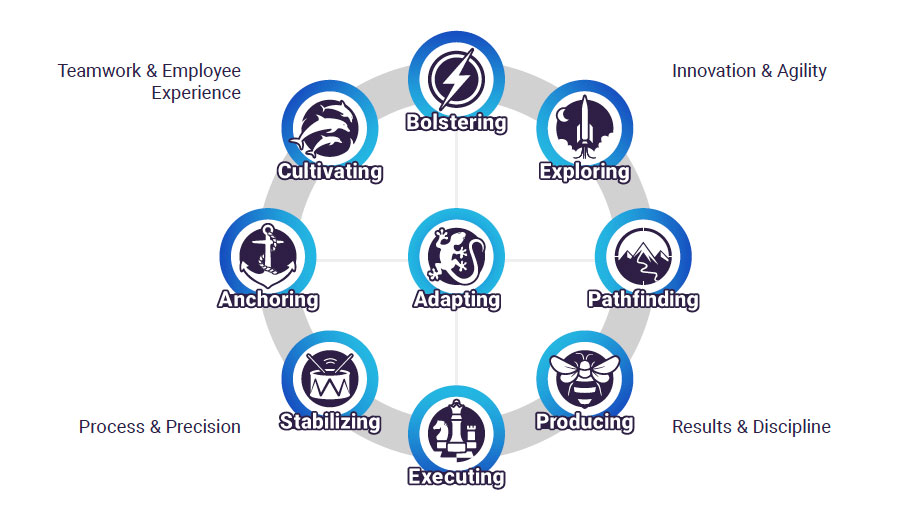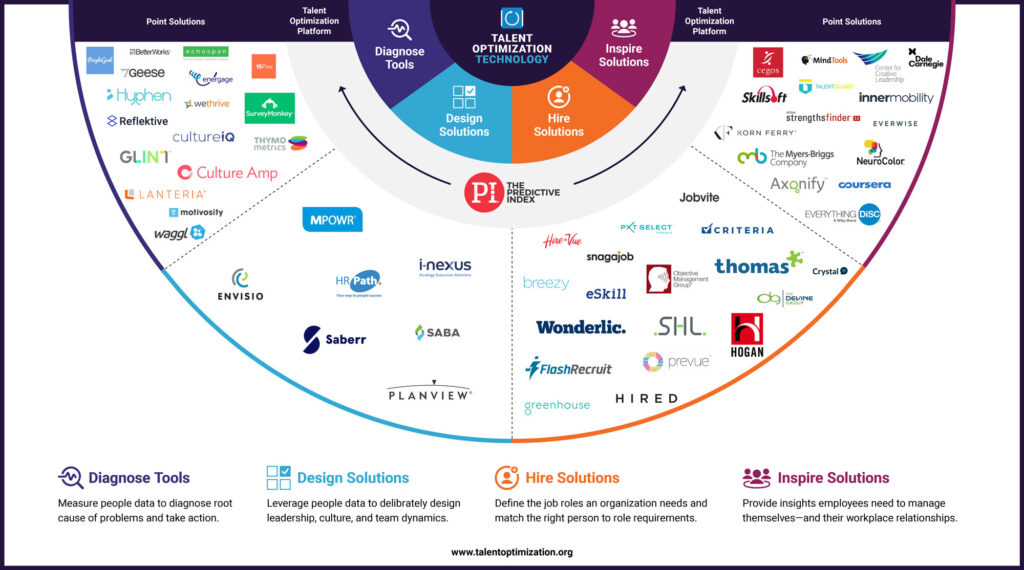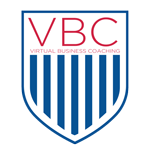The meeting point of talent optimization and business strategy
Watch this talent optimization meets business strategy video.
Try PI’s Behavioral Assessment™ for free and experience the power of the world’s leading talent optimization platform.
Watch this talent optimization meets business strategy video.
Try PI’s Behavioral Assessment™ for free and experience the power of the world’s leading talent optimization platform.
Imagine you have a team of 10 employees using a rope to pull a boulder up a hill. Two people are pulling with all their might, seven are pulling–but not at full force, and one person is actively sawing the rope in half. If any of your people are checked out, this is what’s happening in your workplace every day, and it’s preventing you from reaching your business goals. Just imagine what your company could achieve is all employees pulled in the same direction at full force. The Predictive Index makes this possible.
PI gives you the people data you need to hire the right people, build great teams, align them to your business strategy, and achieve desired organizational goals. Driven by 60 years of behavioral science, PI blends psychometrics and technology to provide you with the tools that help:
Focusing on behaviors that matter most for on-the-job performance, PI’s assessments are:
PI quantifies people’s behavioral drives in the workplace by four factors, dominance, extraversion, patience, and formality. Here’s how they’re defined:
The Reference Profile generated when someone takes PI’s Behavioral Assessment is based on these four factors.
PI uses Reference Profiles as an easy-to-reference grouping of the characteristics of people with similar drivers. Once you know someone’s Reference Profile, you can gain insight into their defining workplace behaviors, know how to work with them more effectively, and anticipate traps and pitfalls they tend to fall into.
As a further referencing tool, PI organizes profiles into four groups, Analytical, Social, Stabilizing, and Persistent profiles. Click on an icon below to reveal more about each profile:
The Reference Profiles in the Analytical group are more dominant than extraverted and work at a faster pace. In the workplace, people in this group are generally more task-oriented as opposed to people-oriented:
The Reference Profiles in the Social group are highly extraverted compared to other behavioral drives. In the workplace, people in this group tend to focus on relationships:
The Reference Profiles in the Stabilizing group have a low amount of dominance and extraversion, with high patience and formality. In the workplace, people in this group are generally steady, detailed, and work well with structure and processes.
The Reference Profiles in the Persistent group are more dominant than extraverted, with a high amount of patience. In the workplace, people in this group are generally task-oriented and deliberate, and thrive when they have control over their own work.
Team Type describes a team’s collective working style. Powered by aggregate behavioral data gathered from individual team members, PI gives you visibility into that team’s superpowers, so you can lean into strengths and be aware of caution areas. PI organizes nine Team Types into four Team Discovery quadrants.

Click on an icon below to reveal more about each Team Type.
Ready to get started? Try PI’s Behavioral Assessment™ for free, or Contact us today.

Click on an icon below to reveal more about each Strategy Type. The PI platform provides recommendations on how to pair and optimize a variety of Team Type and Strategy Type combinations.
Ready to get started? Try PI’s Behavioral Assessment™ for free, or Contact us today.
PI quantifies people’s behavioral drives in the workplace by four factors, dominance, extraversion, patience, and formality. Here’s how they’re defined:
We help bring PI’s ‘Better Work, Better World’ vision to life, bridging the gap between your business strategy and people strategy by enabling you to:
Ready to get started? Try PI’s Behavioral Assessment™ for free, or Contact us today.

“The Predictive Index provides guidance on how to manage our people and make sure we have the right people in the right seat.”
Anna Camooso, Director of Human Resources
Northeast Remsco, Construction
Ian Tonks’ journey began in the late 1990s when he led a 650-employee youth sports company that served Major League Soccer, the NFL, and Jack Nicklaus’ Golden Bear International. After marrying in 2006, Ian shifted to a role at a Bay Area university, leading capital campaigns and aiding the school’s transition to NCAA Division II athletics. In 2009, he launched a business development practice to help leaders grow strategically and sustainably. His first book, Replacing the Rainmaker, was published in 2015. Since 2016, Ian has been an Expert EOS Implementer, guiding leadership teams through the Entrepreneurial Operating System® (EOS) to help them clarify their vision, strengthen their leadership, and improve business outcomes. With this experience, he has worked with countless entrepreneurs to successfully transform their organizations and align their people with their goals. With three decades of leadership and entrepreneurial experience, Ian now leads several companies:
Ian holds an MBA from Dominican University of California and a bachelor’s in sports science from the University of Northumbria. He enjoys fitness, golf, family, and travel and lives in Orange County, CA, with his wife and daughter.
Want to know more about other Ian Tonks Companies? Click here.

Scour PI’s learning library or search PI’s Blog by audience, category or topic.

Click on a video testimonial to see how PI has inspired teams to crush their goals:
Ready to get started? Try PI’s Behavioral Assessment™ for free, or Contact us today.
Talegy has a help-first, no-cost engagement process:

Email: ian@talegy.co
Want to know more about other Ian Tonks Companies? Click here.

Venturers are characterized by people who explore. These workers exceed in environments that push established boundaries. Strong-willed and goal-oriented, Venturers will stop at nothing to achieve their innovative objectives.
Balancing strategies occur when balancing innovation and process, or employee experience and results. An organization with a Balancing strategy between innovation and process seeks to promote experimentation and efficiency, which may be conflicting initiatives. More often than not, this happens when established companies effort to resolve issues with existing offerings while also competing with smaller, more flexible companies. An organization with a Balancing strategy between employee experience and results seeks to build staff engagement and acquire new customers. More often than not, this happens when organizations emphasize bottom line outcomes at all costs, leading to employee burnout, which they try to correct with a people-centric approach.
Organizations with an Adapting strategy may have an excessive amount on their plate due to lack of clear direction around what’s needed to succeed. While it’s possible to pursue a variety of strategic priorities, and it may even be necessary in some cases, moving in too many directions at once can lead to inefficient resource distribution, conflict around what to prioritize, and lack of clarity about what leadership and culture should look like.
Organizations with a Pathfinding strategy prioritize both exploring and producing activities. They’re moving to be more focused and organized around their most profitable or popular services. Innovation is common, but the focus is on building offers that will gain traction in the marketplace, while being careful not to disrupt existing customer relationships.
Organizations with a Producing strategy make a name for themselves by outshining the competition. They utilize tactics around pricing, quality, and delivery of products and services, and set processes to unify teams. They pursue innovations only if they add value to existing offers or help distinguish them from competition. Success is about market penetration and market share.
Organizations with an Executing strategy prioritize both stabilizing and producing activities. They implement structured company-wide systems to maintain consistency across customers, and innovate by leveraging existing resources. Uncomfortable with rolling the dice, they only take strategic risks to ensure stability for their customer base.
Organizations with a Stabilizing strategy determine how to improve or simplify internal procedures to minimize risk, trim organizational fat, lower customer retention costs, and scale-up rapidly. They standardize or automate processes, and pursue new innovations only after careful consideration. Success means achieving higher performance from existing offers, and addressing service gaps to retain clients.
Organizations with an Anchoring strategy prioritize both stabilizing and cultivating activities. They often have a well-defined market position, which allows them to refine existing services and focus more on their employees and being a good corporate citizen. They innovate around the employee experience, but are selective about which business innovations to pursue.
Organizations with a Cultivating strategy invest in employee development and in their reputation as a good corporate citizen. Their structure and processes are predictable and accommodating so employees know what to expect, and can avoid work and personal conflicts. Innovation efforts are internal, with success measured by engagement, maintaining of a legacy, and fostering of a positive workplace climate.
Organizations with a Bolstering strategy prioritize both exploring and cultivating activities. They work to retain their top talent and create a sense of staff identity as they continue to experiment with a variety of market-focused innovations and ventures. They define success both in terms of bringing unique products and services to market and maintaining high employee engagement.
Flexible and well-equipped for new or changing situations, Adapting teams self-organize and work together when they see value in combining individual strengths. They exchange information organically, and develop ‘how to work’ expectations over time. When conflict arises, they’re malleable enough to address it using whatever mediation strategy seems most appropriate at the time.
Fast-paced, goal-oriented, and competitive, Pathfinding teams are relentless. Conflict is frequent, with each person championing their point of view. They see conflict as valuable, as it forces opposing viewpoints and different lines of thinking. Poor communication can result when team members don’t take the time to coordinate with one another before acting.
Competitive and intense, Producing teams are task-oriented and keep their eye on the prize. They work together when it helps them to reach individual goals, though it has to be a win-win to do so. When exchanging resources, team members may expect something in return or use information to gain influence over others. Politics may play a part in how work gets done and by whom.
Disciplined, conscientious, and professional, Executing teams are no-nonsense, and collaborate when required. Addressing conflict logically and swiftly with a focus on facts versus feelings, they tend to work on their own tasks individually, with minimal resource exchange.
Structured, task-focused, organized, and practical, Stabilizing teams are risk-averse, work transactionally with clear expectations around who does what when, and are known for being “by the book.” They share information on a need-to-know basis and use defined structure and roles to avoid conflict. When conflict does occur, they may be slow to address it, prioritizing damage control over relationship repair.
Process-oriented, steady, and eager to help one another, Anchoring teams are organized and careful in planning work activities. Team members are highly in tune with what’s going on within the organization and are less externally focused. They establish procedures for addressing conflict to minimize determinantal outcomes.
Cooperative, supportive, and loyal, Cultivating Teams are friendly, accepting, and respect the process of consensus-building. For the most part, they avoid conflict, but when it occurs, address it in a constructive manner and use it to strengthen relationships.
Social, fun, and full of energy, Bolstering teams like to brainstorm in the name of innovation, and cheer each other on. With an informal communication style, they enjoy robust discussions, addressing conflict head-on, and building deeper, trusting relationships over time.
Daring, risk-tolerant, and imaginative, Exploring teams have an active desire to learn and try new things. Team members stand by their views but are willing to listen to others, allowing for constructive conflict, which helps the group to pressure-test or produce new ideas.
Scholars are reserved yet knowledgeable workers. These people are driven by a need for mastery in their areas of specialization. These workers value stability and consistency. Although they are solitary by nature, when you enter their space of expertise they are informative and authoritative.
Confident, analytical, and persistent, Individualists are strong-minded people who approach challenges with confidence. These workers are driven by a need to solve problems, constantly moving the organization forward. Expect these workers to present unconventional ideas with characteristically strong conviction.
These workers are like the gears of a well-oiled machine. They are reliable and relaxed individuals who are informal in their work, but rarely drop the ball. Operators are cooperative and patient, with the ability to remain calm in nearly any circumstance.
Guardians are formal workers that bring structure and precision into the workplace. These workers are conservative in nature, often reluctant to make risky decisions. Guardians are approachable and reliable when it comes to ensuring the durability of day-to-day operations, and are often steady and dependable perfectionists.
Just as a house needs a strong foundation, every team needs a strong backbone. An Artisan can fill that need. They listen more than they speak and are diligent, deliberate, and reliable in their work.
The ultimate generalist, Adapters are fluid team members that can take on many kinds of roles. They are motivated by a fairly balanced mix of Behavioral Drives, which can make them hard to read at times. These versatile workers can transform their working styles to meet the needs of the team.
Charming and well-spoken, Persuaders won’t take no for an answer. These outspoken workers know how to work a room and motivate a team. By mobilizing groups and teams, Persuaders possess the ability to rally workers toward a single, unified goal.
Promoters are workers you want on the front lines. Extraverted and charismatic, they are hard not to like. They are fluent conversationalists that ask questions and listen intensely to everything you have to say. Promoters think “outside the box” and will empower others in pursuit of their goals.
These workers often assume leadership positions. Mavericks are visionaries with high aspirations and incredible tolerance for risk. They are able to leverage their personality traits to connect with people and their values, thus improving their capacity to make their dreams a reality. Confident and fast-paced, Mavericks come into projects expecting to impact the status quo.
Often cooperative, empathetic, and patient, Collaborators are important teammates to enlist. These workers approach tasks with an open mind and are unafraid to consult multiple opinions before deciding. They are unlikely to incite conflict and take steps to ensure everyone agrees before moving forward.
Any group in need of an unwavering leader should look for a Captain. These individuals are independent and strong-willed, willing to accept any challenge and constantly raising the bar for their organizations. Captains work well under pressure and command stressful situations with an air of confidence and authority.
Humble and supportive, Altruists are precise and helpful colleagues. These extraverted workers are great teammates that remain level-headed even when things get heated, making them great diffusers of conflict. Altruists are detail-oriented and unafraid to delegate tasks. They usually follow-up strongly on task delegations.
Unlike the previous reference profiles, the Strategist is a big-picture character. Although naturally introspective and reserved, Strategists are always prepared with a plan and know how to direct an organization long-term. They are factual leaders and are always happy to decide.
If anyone is to go down the proverbial “rabbit-hole”, it’s the Specialist. Although they require time, Specialists are the most reliable workers when detail is of the utmost importance. While others shout and steal the spotlight, you can trust Specialists to diligently be reading the fine print in the background.
Venturers are characterized by people who explore. These workers exceed in environments that push established boundaries. Strong-willed and goal-oriented, Venturers will stop at nothing to achieve their innovative objectives.
The Controller is your go-to person when you need a project to be in order. Controllers are self-disciplined and fast-paced. There’s never room for error in their work as they work hard to develop technical expertise and operate within established guidelines.
Analyzers are detail-oriented and thorough workers. Before making decisions, they need to ensure they can gather all the relevant data. For an Analyzer, nothing is more daunting than the thought of making an uninformed decision—especially if they are wrong.
The average company loses $2 million in productivity per year due to disengagement. The culprit is the four forces of disengagement–mismatches between your employee and their role, manager, culture, and team–resulting in employees who do the bare minimum to keep their job. What could you accomplish with a fully engaged team? The PI Employee Experience Survey™ allows managers to easily gauge employees and gather candid, confidential feedback on their work experience. The survey provides engagement trends at every level of your organization—whether that’s a team, a department, or your entire company. Insights will allow you to customize your actions to group strengths and needs, and improve engagement at micro and macro levels.
You can’t build a house without a foundation. Likewise, you can’t hire, manage, or organize your people without an agreed-upon business strategy. The PI Strategy Assessment measures leaders’ perceptions, agreement, and confidence in their business strategy, and their belief in the company’s ability to execute it. Having confidence in your ability to execute your business strategy starts with having the right senior leaders in place. The PI Behavioral Assessment™ maps leaders’ behavioral patterns to the chosen strategy, and uncovers gaps so you can plan appropriately, like where to tap into other aptitudes within the company to achieve your strategic goals.
Don’t let PI become your best kept secret. Build an award-winning culture by encouraging all your employees to take the six-minute free-choice PI Behavioral Assessment™, proudly share their findings, and learn what drives them and those around them. Doing so allows conversations to become easier, conflicts to be avoided, and decisions to be made faster. Build better managers. Leverage the Manager Development Chart to help your managers understand their strengths, caution areas, and areas for improvement. Then use the Management Strategy Guide to custom-tailor their management styles for each of their direct reports’ behavioral drives and needs to build strong reporting relationships.
Gut feel is not a good enough reason to hire someone. Neither is relying solely on past performance indicators like GPA, references, or a pedigreed resume. Instead, turn to hiring tools that incorporate behavioral and cognitive insights, and predict how a candidate will think and work. Know who you’re looking for before a candidate steps into your office for an interview. Start by defining job requirements, and use PI’s software to help you set behavioral and cognitive job targets. If you’re not sure where to begin, tap into the wisdom of thousands of hiring managers by using benchmarked data. Cut down on screening time through a match scoring system that sequentially orders the best suited and qualified candidates. Finally, interview with confidence. Bring structure to your interviews through a candidate-customized Interview Guide that shows you how a candidate’s behavioral drives and needs align to the job target you’ve set, and recommends questions to probe for gaps and confirm fit.
Thank you for your interest in Talegy and the Predictive Index. Click this link to take PI’s five-minute behavioral assessment and receive a one page summary report with additional informational links and a video describing your PI reference profile.
Contact us to schedule an optional 15-minute no-cost readback of your results.
Cell: (415) 847-2212
Email: ian@talegy.co

To “spring clean” your life, you need to understand how and where your life is draining you. For many, that feeling of being overwhelmed comes from too many tasks, too many commitments, and being surrounded by people who don’t support or inspire you. In this limited time Spring Clean Your Life offering, you’ll establish a clear 90-day plan for living your life “on purpose.”
Session topics include:
Contact me to schedule a free 15-minute call to identify your needs and determine if we are a fit.